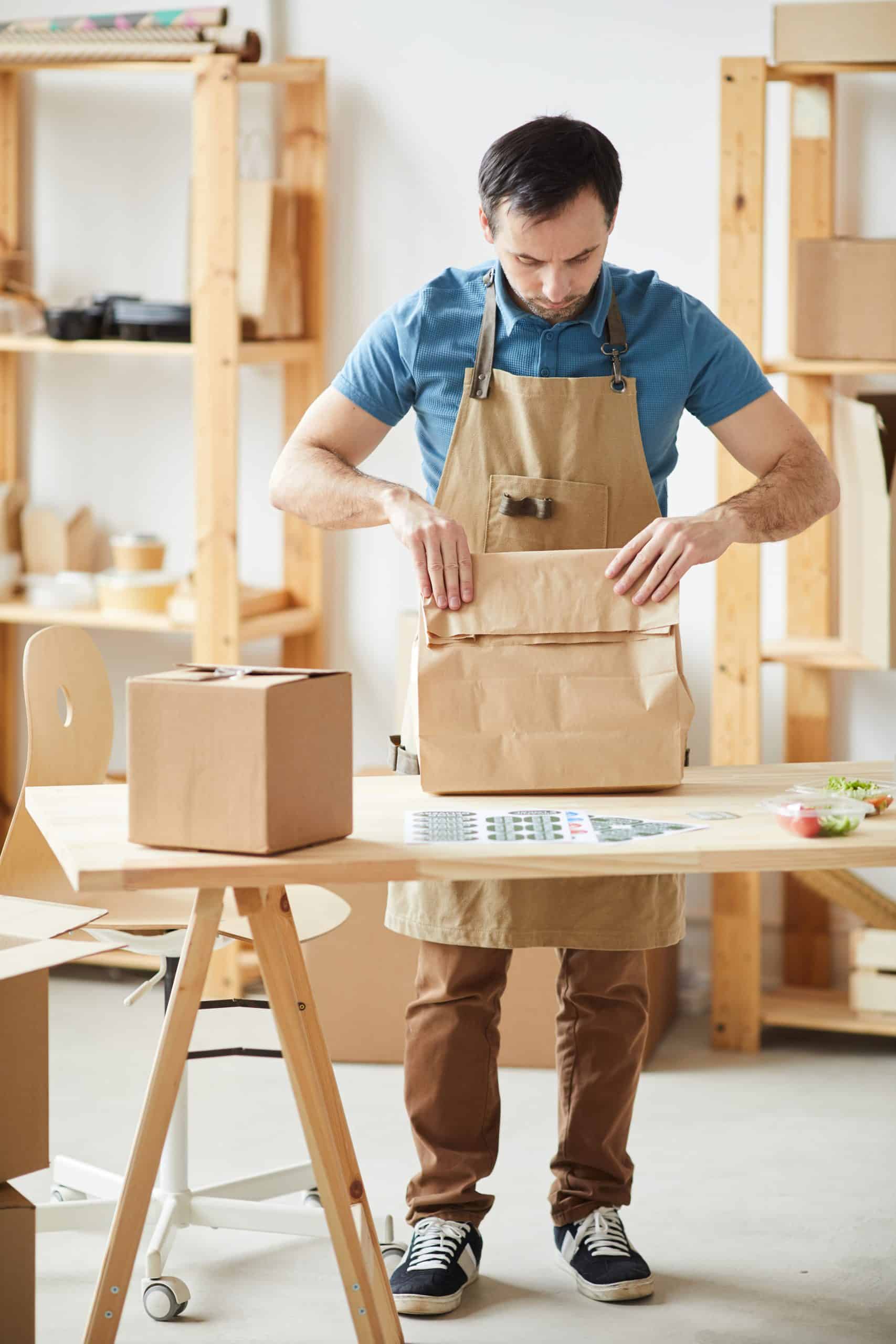What Considerations Are Essential for Sustainable Packaging in UK E-Commerce?

In the modern consumer landscape, sustainability is no longer just a buzzword. Instead, it's rapidly becoming a vital aspect of how businesses operate. Especially in the e-commerce sector, sustainable practices are increasingly important, as customers are becoming more conscious of the environmental impact of their shopping habits. Therefore, businesses must adapt to meet this demand. One of the most direct ways e-commerce businesses can do this is by rethinking their packaging strategies. But what does a move towards more sustainable packaging entail? This article will explore the key considerations for UK businesses seeking to make their packaging more eco-friendly.
The Importance of Sustainable Packaging
The first thing you, as businesses, need to understand is the importance that sustainable packaging holds today. It's not just about being a good corporate citizen. It's about meeting changing consumer expectations and staying competitive in a progressive market.
A lire en complément : How to Leverage Big Data for Personalized Marketing in a Swindon E-Commerce Business?
The rise of e-commerce has fundamentally changed the way consumers shop and receive products. Unfortunately, it has also led to an increase in waste, most notably in terms of packaging. Packaging materials, especially plastic, can take hundreds of years to decompose, and their manufacture also contributes significantly to carbon emissions.
Furthermore, consumers are becoming increasingly aware of these issues, leading to a demand for more sustainability in e-commerce. A recent study showed that 73% of consumers would be willing to pay more for products that come in sustainable packaging. Therefore, adopting sustainable packaging is a smart move, both from an environmental and a business perspective.
Lire également : Which Online Learning Platforms Are Best for Corporate Training in UK Companies?
Choosing Sustainable Packaging Materials
The choice of packaging materials is one of the most critical aspects of creating a sustainable packaging strategy. The aim should be to reduce the environmental impact of your packaging as much as possible, while still protecting the product during transportation.
Paper-based materials are a popular choice, due to their recyclability and the fact that they come from renewable sources. However, it's essential to ensure that the paper used has been responsibly sourced and that it's easily recyclable in its final form. This often means avoiding the use of laminates or coatings that can make recycling more difficult.
Another option is to use materials made from recycled waste. This not only reduces the need for virgin materials but also gives a new life to waste that would otherwise end up in landfills. However, it's crucial to ensure that these materials are still recyclable or compostable after use.
Designing for Sustainability
The design of your packaging can also significantly influence its environmental impact. This involves thinking carefully about size and shape, as well as how easy it is to break down and recycle.
Reducing the size and weight of packaging can have a considerable effect on its overall carbon footprint. Smaller, lighter packages require less material to produce and less energy to transport, leading to lower emissions.
Designing packaging that's easy to break down and recycle is also essential. This means avoiding complex combinations of different materials and making it as easy as possible for consumers to separate different components.
Educating Consumers
Even the most sustainable packaging can only have a positive impact if it's correctly handled once it reaches the consumer. Therefore, educating your customers about how to dispose of your packaging is a vital part of a sustainable packaging strategy.
This can be achieved through clear, concise instructions on the packaging itself, explaining how to recycle or compost it. Additionally, you could provide more detailed information on your website or through other communications with customers.
The Role of Legislation
Lastly, it's important to consider the role of legislation in shaping sustainable packaging practices. In the UK, businesses are required to comply with various regulations regarding packaging waste and recycling.
The Packaging and Packaging Waste Directive, for example, places responsibility on businesses to reduce packaging waste and promote recycling. Non-compliance can lead to substantial fines, so it's crucial to keep up to date with any changes in legislation.
Furthermore, it's worth noting that the trend in legislation is towards greater sustainability. This means that making changes now could help you stay ahead of future regulations.
In conclusion, sustainable packaging is a complex topic, requiring consideration of materials, design, consumer education, and legislation. However, by taking a proactive approach, businesses can not only reduce their environmental impact but also improve their relationship with consumers and stay competitive in a rapidly evolving market.
Shifting towards Reusable Packaging
The concept of a circular economy is gaining traction in the packaging industry, and this is where reusable packaging comes into play. Reusable packaging is not only a viable solution for reducing packaging waste, but it also has the potential to reduce costs in the long run.
Reusable packaging, as the name suggests, is designed to be used multiple times. This often involves a system where consumers return the packaging to the retailer or manufacturer. Once returned, this packaging is cleaned, refilled, and returned to the supply chain, ready for the next customer.
For example, several e-commerce companies have started using reusable mailers. These are made from durable materials that can withstand multiple shipping cycles. After the customer receives their order, they can simply flip the mailer inside out, revealing a pre-paid return label. The customer can then send the mailer back to the retailer for reuse, thereby, reducing the environmental impact.
However, implementing reusable packaging is not without its challenges. The logistics of collecting and cleaning the packaging can be complex. Consumers also need to be educated about the system and motivated to participate. This might involve incentivizing returns or making the process as convenient as possible.
Leveraging Technology for Sustainable Packaging
Technology has a crucial role to play in achieving sustainable packaging solutions. There are numerous tools available that can help companies assess the environmental impact of their packaging. For instance, life-cycle assessment (LCA) software is used to quantify the environmental impacts associated with all the stages of a product's life from cradle to grave.
Moreover, companies can use 3D printing technology to create prototype packaging designs. This allows them to test and modify their packaging solutions before mass production, reducing waste from unsuccessful designs.
Artificial Intelligence (AI) and Machine Learning (ML) can also be utilized in optimizing packaging design for both sustainability and efficiency. For instance, AI can be used to analyze thousands of design variables and identify the most eco-friendly and cost-effective packaging design.
Businesses can also use technology to engage with the public and educate them about their sustainable practices. This could be through websites, social media platforms, or even augmented reality (AR) apps that visualize the environmental impact of their packaging.
Google Scholar and other academic research platforms can also be a great source of the latest studies and innovations in sustainable packaging.
Conclusion: Embracing Sustainability in E-commerce Packaging
In summary, it is clear that sustainable packaging is not just a passing trend, but a necessity for businesses in today's e-commerce landscape. Achieving this involves a holistic approach that takes into account the choice of packaging materials, the design of the packaging, consumer education, and adherence to legislation. Furthermore, the shift towards reusable packaging and the leverage of technology can be game-changers for achieving sustainable packaging.
By embracing sustainability, businesses are not only reducing their environmental impact but also making a smart business move. An eco-friendly packaging approach resonates with modern consumers, differentiates companies from their competitors, and prepares businesses for future regulatory changes.
Remember, every step taken towards sustainable packaging contributes to a healthier planet and a more sustainable future for us all. So, let's start making a difference today with sustainable e-commerce packaging.
